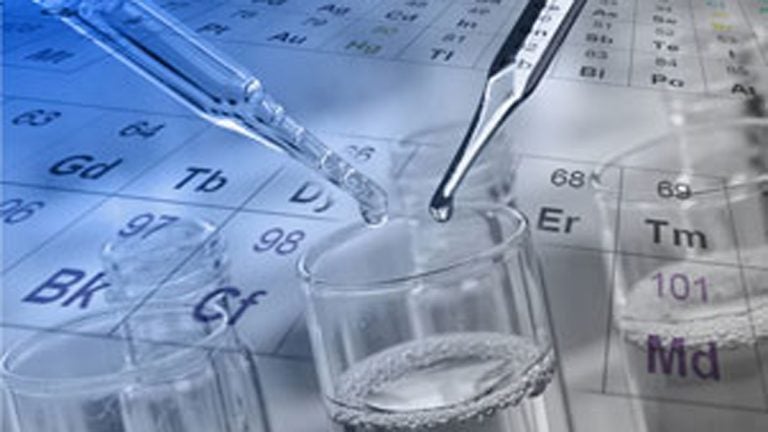Solvay says its South Jersey Times advertisement was misunderstood

(Big Stock)
A chemical company with a facility in South Jersey on Sunday (4/5/15) refuted a claim by the state’s top environmental official that it had prematurely ended its investigation into water contamination near its West Deptford factory.
A spokesman for Solvay Specialty Polymers said the company has no intention of terminating a probe into the presence of PFNA, a potentially carcinogenic chemical, despite criticism by Department of Environmental Protection Commissioner Bob Martin that it had failed to complete its work.
Spokesman David Klucsik said that an advertisement placed by Solvay in the South Jersey Times on April 2, and an accompanying statement, were intended to show that the company had reached a “milestone” in its investigation but is continuing to look into the presence of the chemical in local groundwater.
“Neither the statement nor the ad suggests in any way that our investigation is over,” he told NJ Spotlight. “In fact, we stated just the opposite. We stated that we anticipate the investigation will continue and we also stated that we hope to meet with the department to plan next steps.”
In the ad, Solvay said it had taken about 800 samples from ground and surface water sources, municipal and private wells, and Delaware River sediment over the past year, had contacted some 200 properties, and had studied air quality at specific sites.
The company said in the ad that it had found PFNA in an unspecified number of private water wells, among 95 tested, and that the DEP would determine how to treat the contaminated wells.
In conducting the testing, the company had “completed the elements of the work plan developed with the New Jersey Department of Environmental Protection,” the ad and statement said.
Klucsik told NJ Spotlight on Sunday that “15 or 16” of the 95 wells were found to contain PFNA at 20 parts per trillion or more, a level that merited treatment by the DEP. He was unable to say what the treatment would consist of but said the company has offered to pay for it.
In its statement, the company said it also found contamination in “some” sediment samples taken from the Delaware River, although no PFNA was found in the river’s surface water.
Martin said in his own statement that he was “extremely disappointed” by Solvay’s ad, and accused the company of trying to evade responsibility for the contamination.
“Solvay has much more work to do,” Martin said in a statement. “In fact, investigation work submitted to the DEP to date falls far short of our expectations, neglecting to investigate pathways by which PFNAs have gotten into the area’s groundwater and failing to outline future steps to be taken.”
Martin also attacked Solvay’s statement that the contamination came from “multiple,” though unnamed, sources in the region.
“Solvay appears to be trying to absolve itself of any further responsibility when, in fact, we are only in the first phase of investigation, focusing initially on making sure residents have safe water to drink,” Martin said.
Asked whether Commissioner Martin had misinterpreted the Solvay statement, Klucsik said: “Mr. Martin’s statement is different from ours.”
The company’s West Deptford plant has been the focus of state and federal investigations, and has been linked to contamination in nearby Paulsboro where officials found PFNA at a higher level than anywhere else in the state in a study of perflurorinated chemicals (PFCs), to which PFNA belongs.
State health officials have advised Paulsboro parents not to use municipal water for young children.
PFNA is one of the PFC family of chemicals that are used in consumer products such as textile coatings and food packaging, and have been linked to testicular and kidney cancers in humans, and to reproductive and developmental problems in animals.
Despite saying that it had found the chemical in groundwater near its plant, Solvay accepted no responsibility for the contamination. “Solvay’s actions have been taken in response to public concerns and do not reflect any Solvay conclusion that there is a risk to public health from PFNA, or that Solvay is responsible for PFNA wherever it may be found,” the statement said.
The company said it provided bottled water to participating households during the testing, and has now informed them of the test results. Most of those receiving bottled water have now been told that the service “is being concluded,” it said.
In an apparent attempt to spread responsibility for the contamination, the company said PFNA was found at locations “farther” from the plant, suggesting that the chemical had also come from other sources.
“Taken together and based on the wide area sampled, Solvay’s results indicate that PFNA comes from multiple sources in the region,” the company said. “To fully understand all detections of PFNA and other PFCs in the region would entail the cooperation of multiple parties, including government and industry, to investigate all current and former potential sources.”
The company did not say what the other sources might be, or whether those sources were cooperating with the investigation.
“We would not have the information, nor access to other properties or records historically that would show what other operations existed in the area that might have generated PFNA or other PFCs,” Klucsik said.
Meanwhile, the Delaware Riverkeeper Network, a nonprofit that has urged the cleanup, said the chemical has been found in five municipal wells, in “many” private wells up to 16 miles away from the Solvay factory, and in fish in the nearby Delaware River.
DRN said Solvay released “huge quantities” of PFNA into the environment between the mid-1980s and 2010, when it stopped using the chemical.
DRN Deputy Director Tracy Carluccio dismissed Solvay’s statement that the PFNA came from multiple sources.
“There are no other sources of contamination that used PFNA in the region around Solvay,” Carluccio wrote, in an email. “The main uses of PFNA are in the type of manufacturing Solvay does — there is no other facility like that in the area.”
The Solvay statement comes days before the release of a study on PFCs by the Drinking Water Quality Institute, a panel that advises the DEP on setting water standards.
DWQI, which has been inactive for most of the past five years, is expected to deliver its findings on the detection, treatment, and health effects of the chemicals at a public meeting on April 8, and may recommend maximum contaminant limits (MCLs) that would allow the state to regulate the chemicals.
DRN, which has been pushing for regulation of the chemicals, accused Solvay of releasing its statement as a “PR move” given the timing of the DWQI meeting, and said the statement is more likely intended to curry favor with regulators than to thank South Jersey residents for their cooperation, as stated by the company.
“Until Solvay accepts responsibility for what they have done and cleans up all the pollution they have caused, it is not likely that newspaper ads will gain them any favor with those who have been subjected to the results of their actions,” DRN said.
DEP Commissioner Martin said the company has failed to ensure that the public has clean water to drink.
“Our first priority continues to be to make sure that residents with wells impacted by PFNA get treatment devices installed,” Martin said. “DEP has stepped up to take this action because Solvay has failed to do so.”
______________________________________________________
NJ Spotlight, an independent online news service on issues critical to New Jersey, makes its in-depth reporting available to NewsWorks.
WHYY is your source for fact-based, in-depth journalism and information. As a nonprofit organization, we rely on financial support from readers like you. Please give today.




